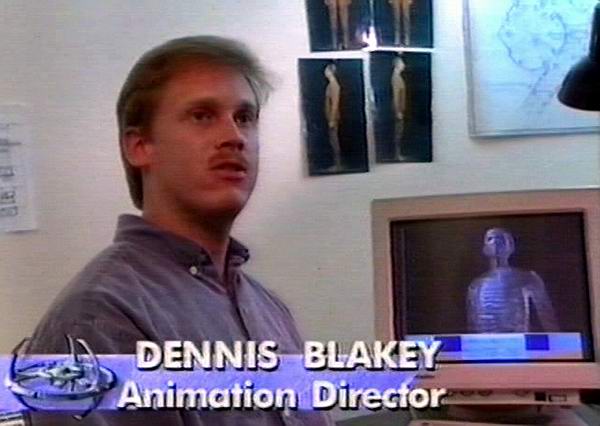
Title
Date
Description
Multiple Available
There are multiple entries on this date. You can modify the date range below to see them all.
CAPS
Established Date: Jan. 1, 1989
- All
- Animation
- Cartoon
- Studio
- Production Company
- JPL
- CalArts
- California Institute of the Arts
- Prisms
- Digital Domain
- Mojo
- Star Trek
- Deep Space Nine
- Apollo 13
- Project Galileo
- Ultimatte
- Tron Legacy
- Storm
- CAPS
- Home on the Range
- Dennis Blakey
- Disney
- Wavefront
- Houdini
- Side Effects Software
-
CAPS or Computerized Animation Production System was a custom software production environment that ran on Silicon Graphics workstations at Walt Disney Feature Animation, now Walt Disney Animation Studios. The software was first used in production on scenes at the end of The Little Mermaid in 1989. The last use of CAPS was on The LIttle Matchgirl in 2006.
-
CAPS was a custom software system designed to support production of 2D and 3D animation across nearly all departments of Disney Feature Animation. Roy Disney was supportive of it's early use for the end scene of Little Mermaid, and the software grew over time to be the primary work environment that nearly all departments used to plan, create layouts, scan animation, add backgrounds, perform camera moves, ink and paint characters, and send final work to camera. The author used CAPS …
CAPS at Feature Animation -
 Walt Disney Animation Studios
Walt Disney Animation Studios -
 Dennis Blakey
Dennis Blakey
CAPS at Feature Animation
CAPS was a custom software system designed to support production of 2D and 3D animation across nearly all departments of Disney Feature Animation. Roy Disney was supportive of it's early use for the end scene of Little Mermaid, and the software grew over time to be the primary work environment that nearly all departments used to plan, create layouts, scan animation, add backgrounds, perform camera moves, ink and paint characters, and send final work to camera. The author used CAPS on Kingdom of the Sun (went into rewrite) and Home on the Range, one of the last of the original CAPS based productions and the first to completely move 3D artists into the 2D departments. CAPS ran on Silicon Graphics workstations. A group of onsite software developers maintained the system. Reportably, three or four developers from Pixar came down and hammered out most of the framework for CAPS in the early days before 1989. In the years 1998 to 2003, the author would visit CAPS departments as the representative of Home on the Range (2000-2003) production to the CAPS groups that worked on all features in production. The position was called Artistic Coordinator, very unique to Disney, as a liason between CAPS and production management. The most common departments visited were Animation Check, Layout and Final Check. Animation Check reviewed hand drawn animation that had moved from Ruff to Cleanup and checkers checked all the artwork for possible leaks or non-closed lines before the artwork was scanned into CAPS and then sent to Ink and Paint. Ink and Painters logged into CAPS would follow color models saved into CAPS and fill in paint for each frame of every character. Final Check would then review each frame, and the author returned to approve each scene out of Final Check before they went to dailies to show the Directors for approval. Those Checkers and Final Checkers were very good (as well as the Ink and Painters) as it was not very often at all to spot a pop somewhere in a scene to fix. The scene would then go to camera via CAPS to shoot to film for dailies or later was shown digitally directly from CAPS to digital projectors. In later years, new features were added to CAPS to support intermixing of 3D animation with the 2D characters. Those were very enjoyable years and what a great group of talented artists, developers and staff that created such beautiful films as The Lion King, Atlantis, Treasure Planet, Lilo and Stitch and many more.
CAPS or Computerized Animation Production System was a custom software production environment that ran on Silicon Graphics workstations at Walt Disney Feature Animation, now Walt Disney Animation Studios. The software was first used in production on scenes at the end of The Little Mermaid in 1989. The last use of CAPS was on The LIttle Matchgirl in 2006.
